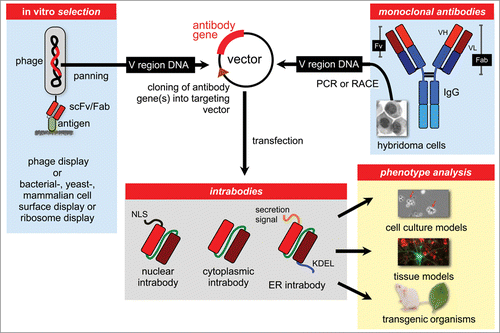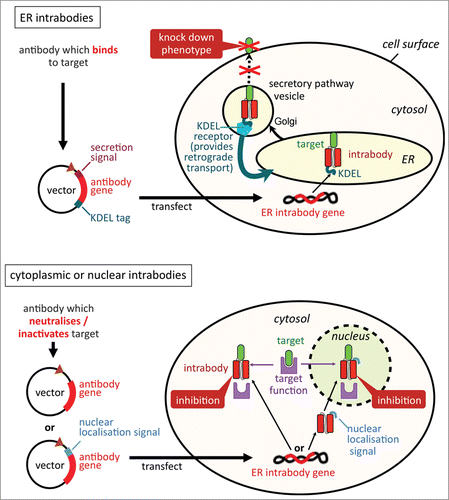Figures & data
Figure 1. The intrabody approach for the generation of protein interference phenotypes. Antibody fragments containing the antigen binding domains (V regions) specific for a particular protein can be selected from antibody phage display libraries or other in vitro selection systems like bacterial, yeast, mammalian or ribosomal display libraries. Alternatively, the variable region genes can be obtained from hybridoma antibodies by PCR with consensus primers, RACE or PCR with adaptor ligated cDNA. Antibody fragments, typically in scFv format, are then cloned into a specific targeting vector allowing expression of the intrabody in the nucleus, cytoplasm or ER.

Figure 2. Differences between cytoplasmic/nuclear intrabodies and ER intrabodies. Via their retention signal KDEL, ER intrabodies (A) retain antigens passing the ER by binding to them. As antibodies are naturally produced in the ER, no particular selection for special folding/stability properties is required. In contrast, cytoplasmic/nuclear intrabodies (B) need to fold correctly in the reducing milieu of the cytoplasm. Further, they need to be tested and screened to identify antibodies which are capable, in addition to binding, to neutralise or inactivate their target's activity in the cytoplasmic biochemical milieu.

Table 1. Strategies for the selection of functional cytoplasmic intrabodies
Table 2. ER intrabodies applied
Table 3. A. Reports of ER intrabody mediated knockdown
Table 3. B. ER intrabody-mediated knockdown: methodological aspects
